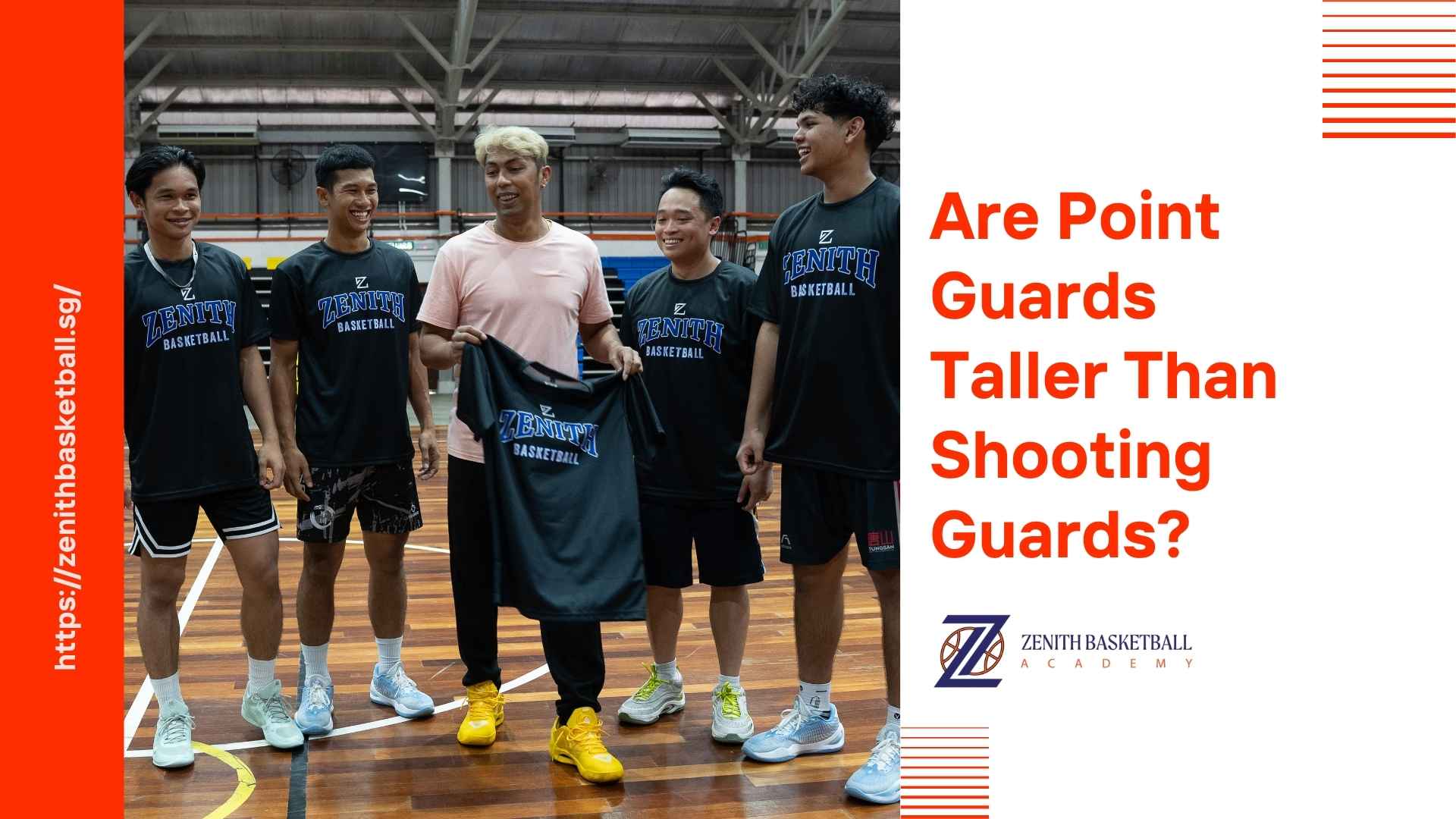
Are Point Guards Taller Than Shooting Guards?
One of the most common questions players and parents ask during training is whether point guards are taller than shooting guards. At first glance, both positions seem similar. They operate on the perimeter, rely on skill and speed, and often share ball-handling responsibilities. But look deeper and you’ll notice the traditional height expectations for each role aren’t exactly the same. And with basketball evolving rapidly in recent years, those expectations continue to shift.
This question isn’t just about curiosity. Height influences how players train, the roles they play, and how coaches evaluate long-term development. Understanding where point guards and shooting guards stand physically can help players figure out which position fits their natural advantages.
To make things even more interesting, the modern game has blended traditional guard roles. Hybrid guards are increasingly common, which means height standards have widened. Still, fundamental differences remain—and they matter more than most people think.
This article breaks down the height comparison clearly so players, parents, and aspiring athletes can better understand how physical attributes relate to guard play. If you’d like to explore related topics after reading this, feel free to check our internal guide on ball-handling drills for beginners, which ties into both guard positions.
Understanding Height Expectations For Point Guards
Traditionally, point guards are the shortest players on the court. Their primary responsibility is running the offense, distributing the ball, and setting the team’s pace. Because their role requires agility, quick changes of direction, and a low centre of gravity, height has never been a major requirement.
In youth leagues, point guards are often selected not by height but by ball comfort, decision-making ability, and confidence under pressure. Many of the world’s best point guards weren’t even close to being the tallest on their teams during development.
Even at the professional level, point guards tend to average between 5’11 and 6’3. But modern basketball has seen a trend toward taller point guards who still maintain guard-level agility. A great example is how elite international teams groom taller guards for versatility on both ends of the court.
A research study by FIBA in 2023 reported that point guards globally average about 6’1, a figure consistent across multiple major basketball leagues worldwide.
Still, the key takeaway is simple: height does not define point guard success. Footwork, IQ, decision-making, and composure usually carry more weight.
Understanding Height Expectations For Shooting Guards
Shooting guards are traditionally taller than point guards. Their role is built around scoring, generating offensive pressure, and defending the opponent’s best perimeter player. Because they need to shoot over defenders, finish through contact, and hold up defensively against taller matchups, extra height becomes a clear advantage.

Shooting guards typically range from 6’3 to 6’7, especially at higher competitive levels. The extra height gives them better shooting angles, better finishing windows at the rim, and better defensive versatility.
A 2024 analysis from the NBA statistics hub found that shooting guards across the league average approximately 6’5, which is consistently taller than point guards. Reference: https://www.nba.com/stats/.
This height difference creates natural distinctions in playstyle. Shooting guards rely more on length and shot creation, while point guards focus on agility and ball management.
So… Are Point Guards Taller Than Shooting Guards?
In almost all cases, no. Shooting guards are usually taller than point guards.
The traditional hierarchy looks like this:
Point Guard → Shorter, faster, more agile
Shooting Guard → Taller, longer, more scoring-focused
But the modern game complicates this slightly. Basketball today is increasingly positionless. Talented guards—regardless of height—often interchange roles depending on matchups and skill sets. Some shooting guards handle the ball like point guards. Some point guards score like shooting guards. Some players sit right in between, forming the hybrid guard archetype.
Still, if we’re looking purely at height averages, shooting guards remain taller across nearly all age groups and competitive tiers.
Why Height Matters Differently For Each Position
Even though shooting guards tend to be taller, that doesn’t automatically make them better players. Height advantages must align with the right skills.
Point guards benefit from being shorter and quicker. They get low to the ground, change directions rapidly, and navigate tight spaces better. Coaches rely on them to break presses, read defences, and orchestrate offense. These traits don’t depend on height.
Shooting guards benefit from height because they need space to shoot, length to contest, and size to defend bigger perimeter players. A taller shooting guard can rise up for cleaner jump shots and play tougher two-way basketball.
In simple terms, height complements each position differently. The key is matching body type with role, then training intentionally.
To explore related skill development, check our internal article on how to shoot better as a beginner.
Can Shorter Players Become Shooting Guards?
Absolutely. While height is helpful, it is not mandatory. There are successful shooting guards in competitive leagues around the world who stand shorter than the average. What they lack in height, they compensate for with elite footwork, high-level shooting accuracy, and impressive off-ball movement.
In youth basketball especially, roles can shift as players grow physically. A shorter player who plays point guard now may experience a growth spurt and transition to a shooting guard later. The reverse is also true.
What matters most is developing a versatile skill set early on.
Conclusion
When answering the question “Are point guards taller than shooting guards?”, the general rule is clear: shooting guards are typically taller. Their responsibilities favour length, scoring angles, and defensive range, while point guards rely more on speed, agility, and decision-making.
But even with these traditional differences, modern basketball encourages versatility. Whether you’re tall, average-height, or still growing, your position should reflect your strengths, style, and long-term potential—not just your measurements.
If you’re ready to discover which guard position suits you best and refine your skills with structured guidance, visit Zenith Basketball Academy for expert-led training programmes. Our coaches help players build confidence, master fundamentals, and grow into smart, adaptable guards. Learn more about our programmes here: Zenith Basketball Academy skills training.
FAQ
Q: Are point guards usually the shortest players on the team?
A: Yes. Point guards are often shorter because their responsibilities emphasise speed, control, and agility.
Q: Are shooting guards always taller than point guards?
A: Not always, but shooting guards are generally taller on average due to their scoring and defensive roles.
Q: Can a point guard be tall?
A: Yes. Modern basketball has many tall point guards who combine size with elite ball-handling.
Q: Does height determine which guard position I play?
A: Height plays a role, but your skill set and strengths matter more when choosing a position.
Click on the link to find out more about Zenith Basketball Academy’s lesson package. Chat with our head coach today!
Home
About Zenith Basketball Academy
Private Basketball Lessons
Kids Basketball Lesson
Group Basketball Lessons
Shooting Drills
Basketball Coach
Whatsapp Us
Gallery






